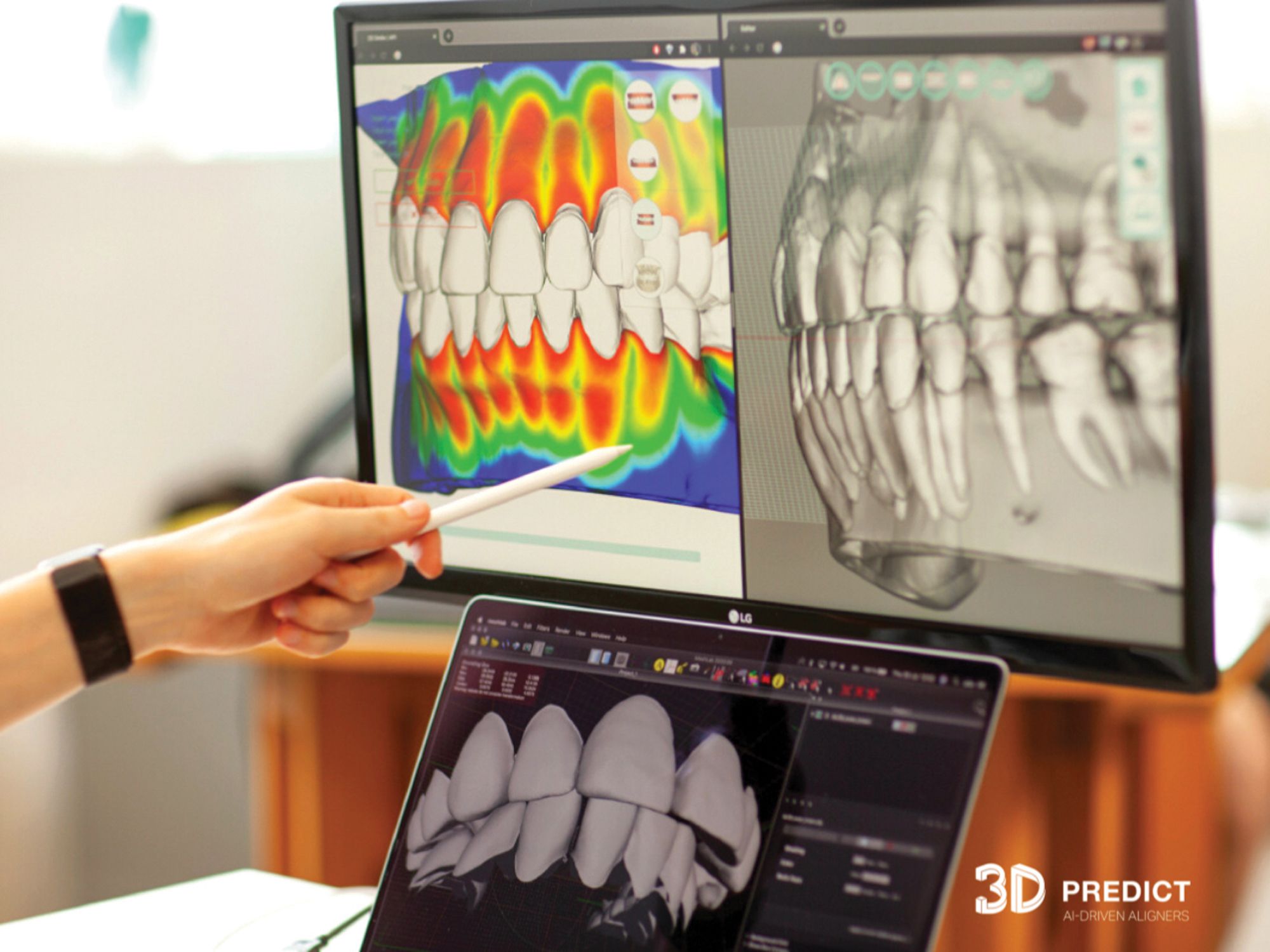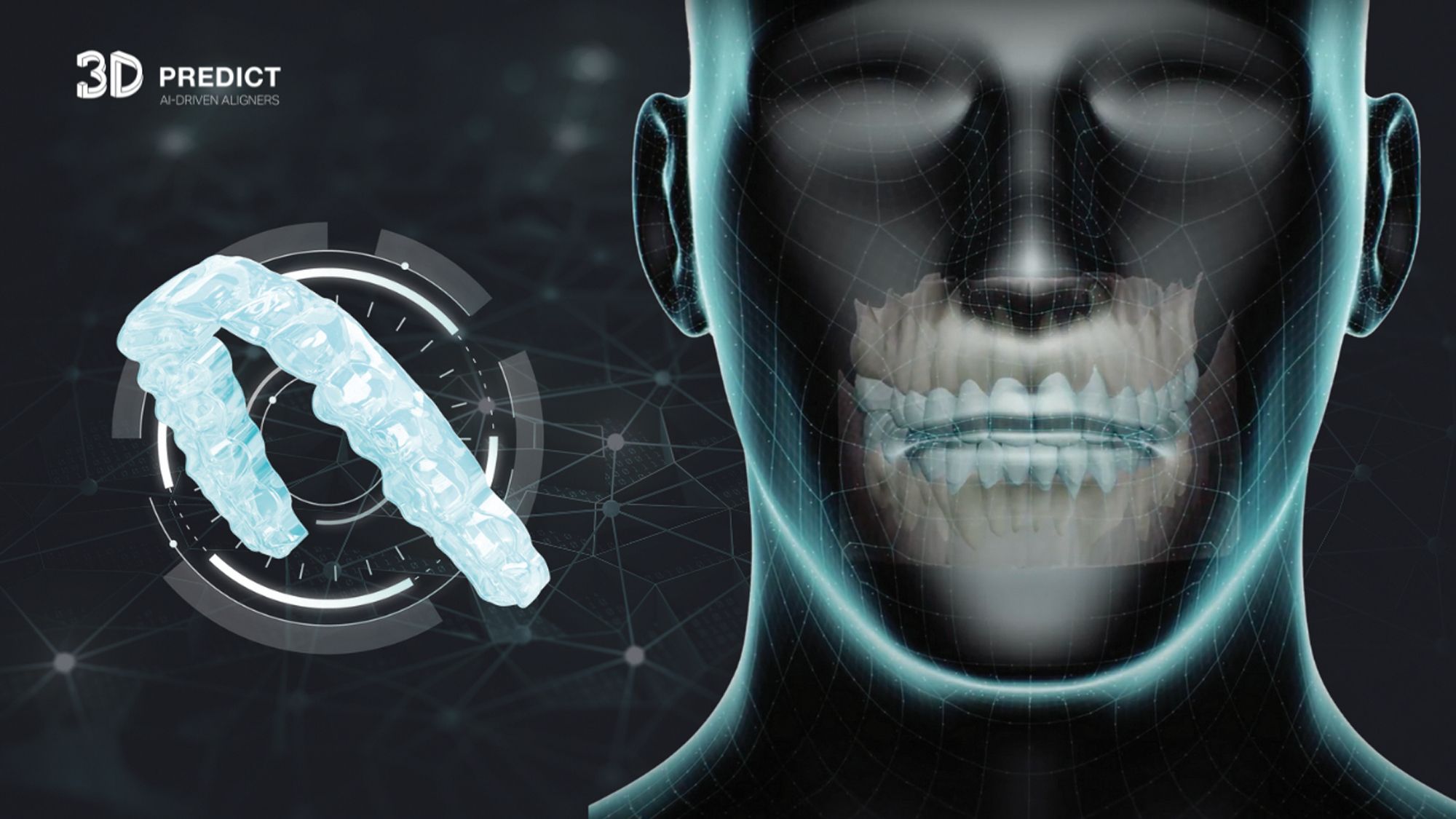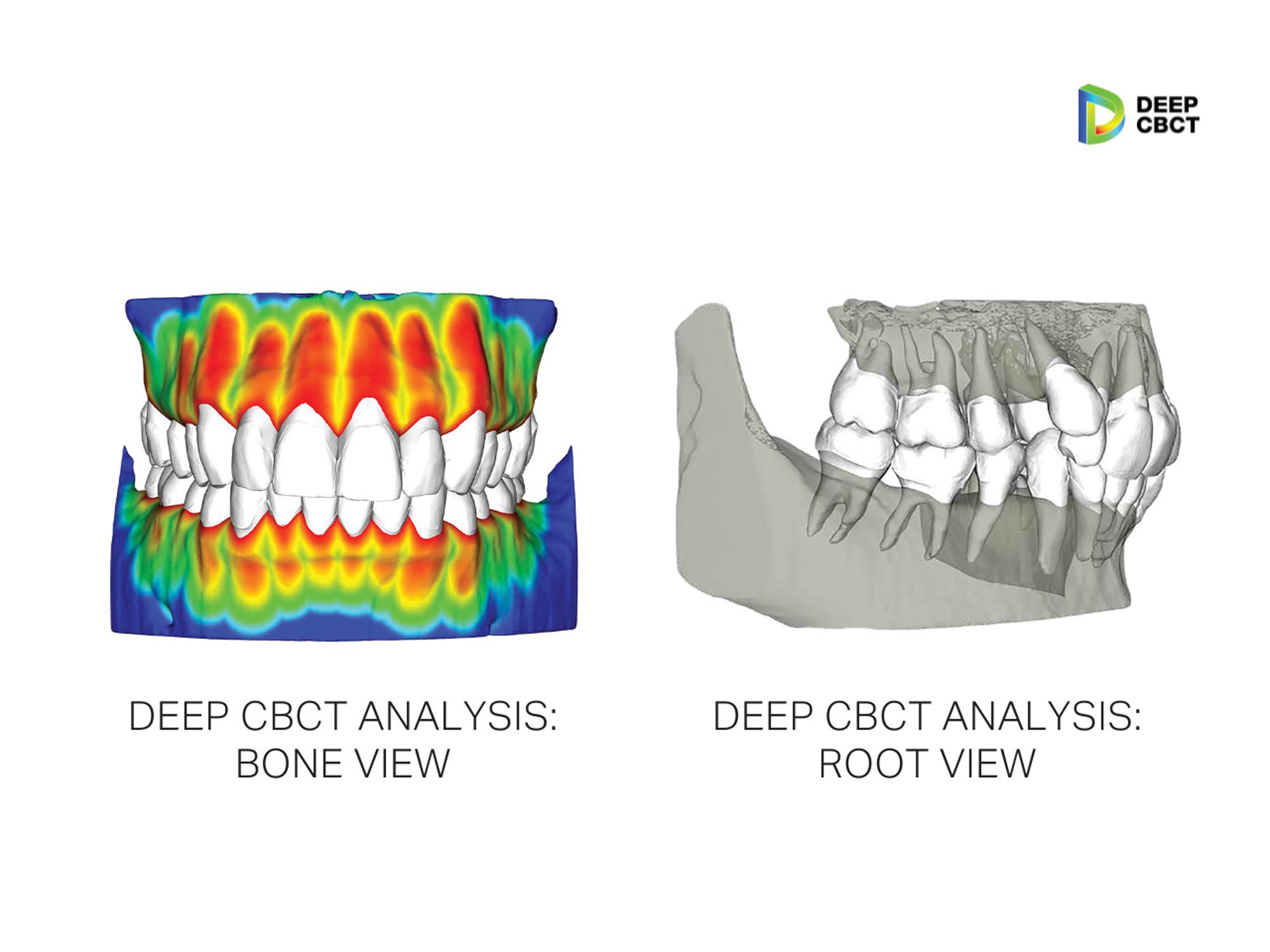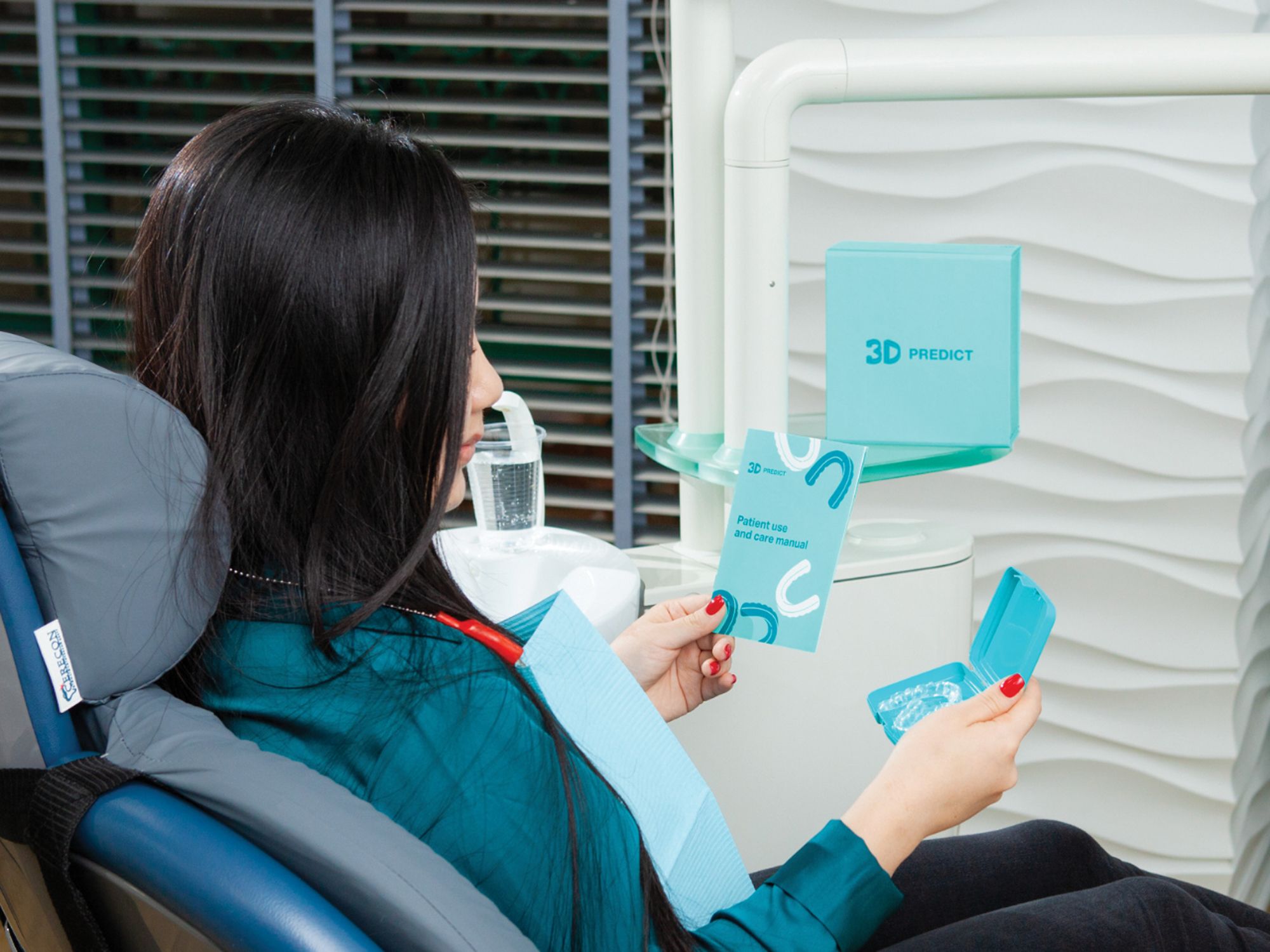In 2013, Marina Domracheva, MD, found out about clear aligners through an orthodontist friend seeking advice on some clinical outcomes when aligning teeth. Dr Domracheva soon became interested in teeth alignment and why it sometimes called for braces and at other times for clear aligners. Because aligners are typically used for milder cases, Dr Domracheva’s interest in the subject expanded.
“I read a lot of articles on PubMed about biomechanics and braces, as well as osteoblastic activity,” says Dr Domracheva. “Then it was obvious that the only difference between alignment brands is in the software.”
Digging deeper into 3D printing and various orthodontic aligner software, Dr Domracheva asked what kind of software could enable a clear aligner to have the effectiveness of braces while maintaining esthetics and patient desire. This led to the creation of 3D Predict.
3D Predict
3D Predict® artificial intelligence (AI) and Deep CBCT® Analysis ensure predictable, effective results for your patients. The AI simplifies complex movements and achieves desired treatment results. Treat cases of every complexity with 3D Predict, even patients for whom you would typically require additional appliances or braces.
3D Predict
888-333-8771 | 3dpredict.com
“The goal was to design and develop a product that could treat patients even better than braces. The key component of the effectiveness of aligner treatment is software, which we use to design the aligners,” says Dr Domracheva. “We developed the artificial intelligence (AI)-based software, which provides more predictable movement. This allows us to treat patients even better than braces.”
The Power of AI
AI is a technology that uses machine learning from data sets to work on its own in developing and delivering outcomes. As it becomes refined, AI becomes more practical in the dental field and can assist in the delivery of predictable, uncompromised clinical outcomes.
While 3D Predict began in 2014, the first version of its software was released in 2017, and it has been training itself using data throughout the past 5 years.
“Software learns from experience like we as human beings learn from experience,” says Dr Domracheva. “As doctors graduate from their residencies, they have a lot of theoretical knowledge, and every year as they treat more patients they become more proficient and more effective. It’s the same with AI.”
3D Predict’s AI software uses root-based and bone-based treatment planning. This means the software automatically populates root and bone models based on 3D Predict’s unique Deep CBCT® analysis. Cone beam computed tomography (CBCT) scans provide the AI software with the necessary data points to predict movement while keeping track of root and bone. Monitoring treatment allowed 3D Predict clinicians and software developers to utilize data to better train its algorithms.
“Once we had thousands of patients who had completed treatment with roots and bone, we were able to know their root positions before treatment, in the middle of treatment, and at the end of treatment,” says Dr Domracheva. “We used these data to train our algorithm of those movements and to know which of those movements were predictable or not. This is a unique data set of completed patients, which differentiates us from anybody else on the market from braces or other aligners.”
But where did the idea of using AI for treatment planning and root-and-bone movement predictability come from? Dr Domracheva says it came from feedback from clinicians and software engineers. The orthodontists wanted to move teeth in a way that made sense and saved time.
“They told me, ‘Now we work with braces, and a couple of braces companies show roots, but these roots are taken from anatomical libraries that are not real roots. Or they never show us the bone,’” says Dr Domracheva. “First, for doctors, it was a clinical need. Doctors told me they needed to turn bone.”
Eventually, a few different teams of software engineers began and kept the process going. They soon suggested that AI could meet this need, whereas traditional methods of software development were falling behind. AI can make movement more predictable through its algorithms while considering the anatomical structure of the jaw and bone.
Handling Technological Hurdles
Teeth need to be moved within the bone to prevent issues. Structures such as maxillary sinuses sit close to the mouth and teeth, which can pose collision issues if the root movement does not take this into consideration. The 3D root and bone models created by algorithms from 3D Predict display a clear and precise image of the mouth, roots, and bones.
Because knowing the root position before beginning treatment is vital, this technology allows clinicians to see in 3D what the predicted movement may be while having a robust view of the mouth. Getting to this point posed challenges on the technological side, initially.
“This is a very complex technological task. Our first prototype was very difficult to develop,” says Dr Domracheva. “To train our algorithms, we needed to wait for the orthodontists to complete the cases. Time was the biggest challenge as we had to wait for patients to complete their treatment. When we started this prototyping process 8 years ago, AI computing was expensive and difficult. Now it’s more of a commodity.”
Dr Domracheva says much of the prototyping and earlier development followed a learning curve. It was about developing and training algorithms from ongoing data sets while understanding certain pitfalls and roadblocks in the early technology.
“We find that different CBCT scans have different resolutions, and maybe patients have implants that could affect the scan,” says Dr Domracheva. “That’s what took us the longest. We couldn’t always identify which algorithms to use, and then, up to that point, we had to wait a couple of years before we could analyze completed treatment.”
3D Predict was able to find software engineers who tackled the problem with a strategic mind-set, focused on the future.
“You’re looking for software engineers who develop, for example, algorithms to play chess. With chess you must predict what’s next. It’s the same here. To see movement, you have 3D imaging because you must align teeth, but you also would like to have a proper occlusion,” says Dr Domracheva.
The Future of AI-Driven Aligner Therapies
With a large portion of orthodontics cases needing braces rather than clear aligners, there is a desire from patients for a clear aligner solution that can work with the same movement intensity as braces.
“Patients, especially adults, will come to the dental office, and doctors will tell them, ‘We cannot treat you with aligners,’ because they have more moderate to severe misalignment. Then the adult patients will say ‘No, no, no, I don’t want braces, I want to do aligners,’ ” says Dr Domracheva. “And the doctors will say, ‘OK, but then you’ve got a compromised clinical outcome.’ It’s like a trade-off for patient care.”
According to Dr Domracheva, this technology can eliminate that trade-off with strong, predictable results that patient and practitioner can feel confident about.
“With this technology our doctors could achieve uncompromised clinical outcomes in a predictable way. By predictable way I mean fewer refinements. Typically, if you don’t achieve what you want with one of your refinements, you’ll need a new set of aligners, a second set of aligners, etc. It will take a lot of time,” says Dr Domracheva. “With our technology, it will reduce the amount of refinements by half. It will change [orthodontics] and has a little bit already. Because you can achieve uncompromised clinical outcomes with 30% less time. It’s good for doctors, patients, and staff.”
The 3D Predict machine learning algorithms will improve even more as time goes on and more data become available to clinicians and software engineers. She emphasizes persistence and expresses excitement for the growth of AI-driven aligner technology. “We just never give up and we continue to improve on it every year.”




